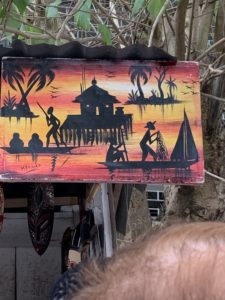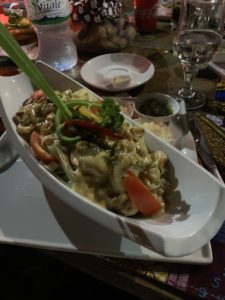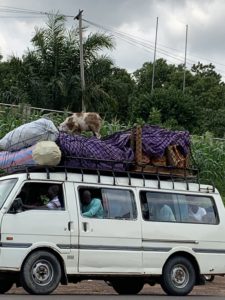
I went to Togo with LDS Charities from July 28, 2019 to August 12, 2019. I never heard of Togo previously and had to do a little bit of research. Togo is about the size of Haiti and slightly smaller than the state of West Virginia. From its Atlantic coast to the northern border with Burkina Faso, Togo is about 350 miles long (560 kilometers). We traveled 290 miles (460 kms) of it twice from Lome, the capital on the coast, to Kara, a town in the north, and back to Lome. Togo has no domestic airline. All travel has to be done by bus or van. All merchandise was carried on big 18-wheelers. There was one road North to South and it was used by everybody.
Our team was composed of 7 trainers from the US and 5 local interpreters with the driver of the van. All luggage (suitcases, backpacks, equipment boxes) went on top of the van, secured by a tarp and rope. I had some trepidation regarding this mode of travel. The team leader has been doing this project for 8 years and reassured us the driver would get all luggage secured and we would make it to Kara. On the way, I saw more of this mode of transportation: van with luggage on top and people packed inside. We were lucky to have the air conditioner working in our van. I saw all kinds of luggage: suitcases, boxes, baskets, even motorcycles and animals. I saw one van with one goat and another one with 2 goats. The goats looked perfectly happy and unperturbed by all the traffic and noise surrounding them.
On the road, we passed by many teak forests that were burned to make charcoal. Bags of charcoal were stacked on the side of the road for pick-up. Attempts to replace the teak trees by replanting were evident but it will take many years (at least 10-15 years). The military presence was conspicuous on the highway. We were stopped at impromptu checkpoints. Our trip to Kara was delayed due to driving behind a large military convoy. I understood that the family of the current president of Togo has been in office since 1967.
After the many cities in the surrounding of Lome, there were small villages and occasional towns along the highway. There were traditional African huts interspersed with houses with corrugated metal roofs. Children playing in the dirt, men sitting in the shades, women carrying baskets with foods for sale on their heads, were seen along the road. We passed through mountains with thick green trees in between the small cities.

























